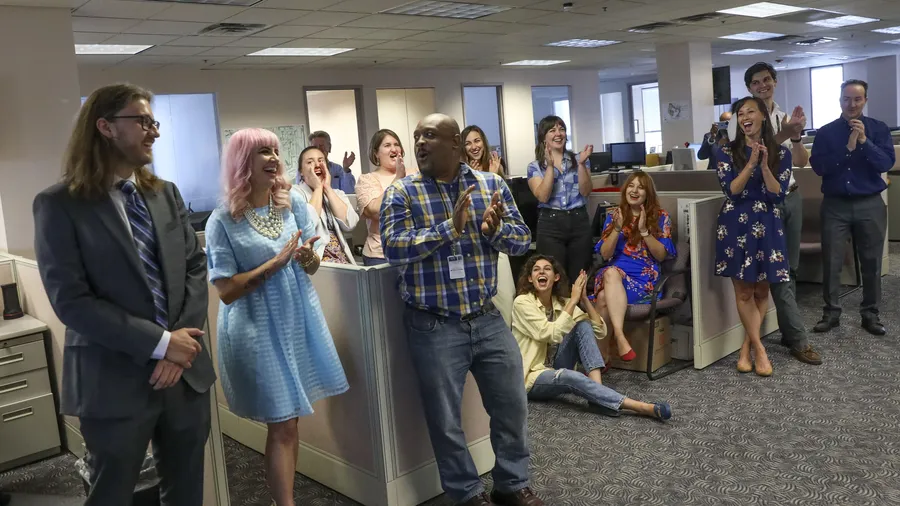Journalists of Color See Work Rewarded
Nominate a J-Educator Who Promotes Diversity
From May 8:
Facebook to Let J-Scholarship Program End:
Some NAHJ Leaders Uneasy About the Connection
No Asian Americans On-Air in 25% of Top Markets
Multiple Reasons for Failure of Black News Channel
Layoffs at Short-Lived Netflix Unit
Kudos for Detailing Tucker Carlson’s Racism
Not What’s in the Bridal Magazines
Increase in Blaming Asian Americans for COVID
Black Churches Plan to Mobilize Over ‘Roe’
L.A. Uprising: ‘Race Made My Editors Nervous’
An Idea: Build Community Into Crime Coverage
‘Everything’s Racist’
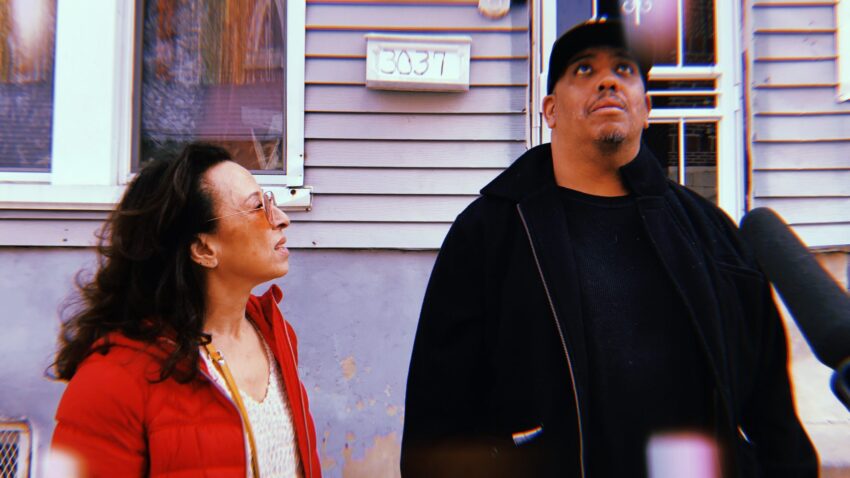
Journalists of Color See Work Rewarded
Journalists of color and their hopes, dreams and achievements won recognition in Pulitzer Prize announcements Monday. They were honored for their investigative reporting, their photographic and management skills and for the work of a journalist who left the mainstream media because too many important stories were going unreported. So she started her own company.
That journalist was Maria Hinojosa, a former NPR reporter who in 2010 started Futuro Media, which produces public radio’s “Latino USA” and has located its headquarters in Harlem.
The staff of Futuro Media, with PRX in Boston, won in the audio reporting category for “Suave,” “a brutally honest and immersive profile of a man reentering society after serving more than 30 years in prison.”
The podcast summary says of Hinojosa and David Luis “Suave” Gonzalez, “What starts as a brief conversation leads to decades of communication between the two, walking the boundary between a journalist-source relationship and true friendship.”
On Twitter, Hinojosa could not contain her joy.
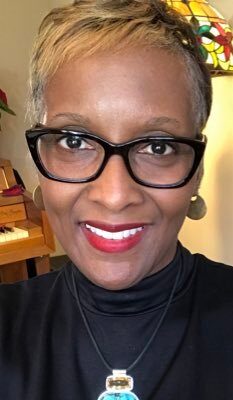 Monica R. Richardson (pictured) had been executive editor of The Miami Herald — the first African American top editor in the Herald’s 117-year history — for barely six months when “Miami awoke to the stunning, heartbreaking news of the sudden collapse of Champlain Tower South in Surfside overnight in June,” as the Herald recalled Monday. The condo catastrophe killed 98 people.
Monica R. Richardson (pictured) had been executive editor of The Miami Herald — the first African American top editor in the Herald’s 117-year history — for barely six months when “Miami awoke to the stunning, heartbreaking news of the sudden collapse of Champlain Tower South in Surfside overnight in June,” as the Herald recalled Monday. The condo catastrophe killed 98 people.
The Herald won the Pulitzer for breaking news. “As a newsroom, we poured our hearts into the breaking news and the ongoing daily coverage, and subsequent investigative coverage,” Richardson said in a statement. “We were relentless in covering the news, delivering context, insights and information available nowhere else and we did it all knowing we were doing it for a community that depended on us for answers. We were the news source that other news sources around the world followed. . . .
“Receiving this prestigious award shows the power and impact of local journalism. This Pulitzer comes with a mixture of sadness and gratification. . . .”

For breaking news photography, Marcus Yam, “a Los Angeles Times journalist with a warrior’s courage and a poet’s heart,” in the words of the Times’ James Rainey, was one of two winners in the category “for his poignant and searing pictures of last summer’s fall of Kabul, Afghanistan, to Taliban fighters.”
 Malaysia-born Yam (pictured), who started in the news business as a photo intern at The New York Times, “delivered pictures of unspeakable tragedy and abiding emotion despite a manhandling by one of the insurgents, the near-constant menace of other fighters and the abundant technical hurdles of transmitting images out of a war zone,” Rainey wrote. It was one of several honors for Yam this year.
Malaysia-born Yam (pictured), who started in the news business as a photo intern at The New York Times, “delivered pictures of unspeakable tragedy and abiding emotion despite a manhandling by one of the insurgents, the near-constant menace of other fighters and the abundant technical hurdles of transmitting images out of a war zone,” Rainey wrote. It was one of several honors for Yam this year.
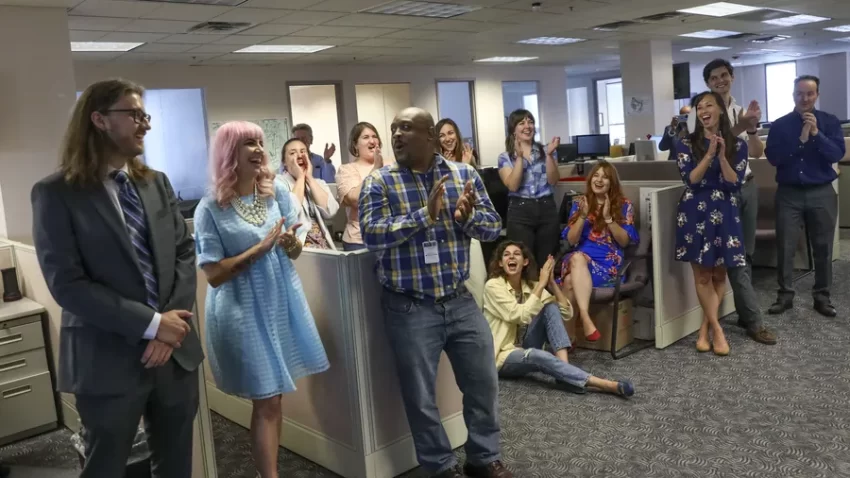
At the Tampa Bay Times, “reporters Corey G. Johnson, Rebecca Woolington and Eli Murray have won . . . in the investigative reporting category for exposing dangers at a Tampa factory, the state’s only lead smelter. The series, ‘Poisoned,’ prompted widespread action,” the Times wrote.
“The reporters detailed the exposure to the neurotoxin endured by Gopher’s workers, most of whom were Black or immigrants. Johnson, Woolington and Murray also showed that the plant had contaminated the community. All three reporters even became certified lead inspectors during the course of their investigation.”
At the Journal-isms Roundtable Feb. 27, when he was toasted after receiving a George K. Polk Award, Johnson said he was humbled. “I hope it will spur newsrooms to give people like me and people who look like me and others opportunities to do investigative reporting and tell some of these more difficult stories,” he said. (video). Johnson is headed for ProPublica.
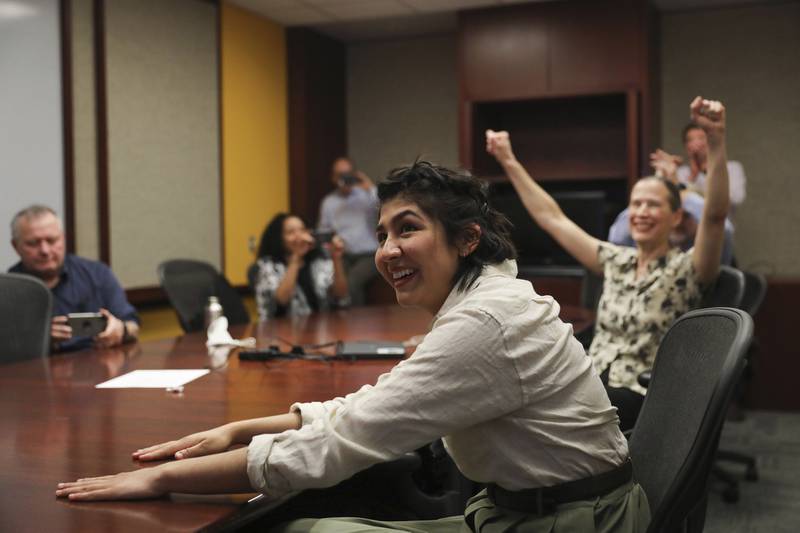
Reporters Cecilia Reyes of the Chicago Tribune and Madison Hopkins of the Better Government Association “revealed that at least 61 men, women and children died in 42 fires in buildings where Chicago officials had been warned — often repeatedly — of major fire safety issues,” the Tribune wrote. “They also documented systemic shortfalls in Chicago’s building enforcement program, revealing a convoluted system of informal rules, outdated records and lax oversight that put the interests of landlords above the safety of tenants. Many of the city’s failures, the reporters found, directly contributed to the deaths.”
Three honors for The New York Times similarly touched on race:
“An investigation . . . into deadly police encounters was recognized for national reporting,” the Times’ Katie Robertson wrote.
“Salamishah Tillet, a contributing critic at large for The Times, won the criticism category for her writing on race in arts and culture. . . .
“Another Times reporter, Andrea Elliott, won the Pulitzer Prize in the general nonfiction category for her book ‘Invisible Child: Poverty, Survival and Hope in an American City,’ which was published by Random House and originated with a 2013 series she did at The Times.”
There were others with racial subtexts. In the commentary category, Melinda Henneberger, as a member of the Kansas City Star editorial board, won “for columns that demanded justice for alleged victims of former Kansas City, Kansas, detective Roger Golubski, who is accused of extorting Black women for sexual favors, sometimes using them to fabricate evidence in cases he was handling,” the Star’s Luke Nozicka reported.
Henneberger joined The Sacramento Bee as a columnist this week. The Star and the Bee are McClatchy publications.
 The award for editorial writing went to “Lisa Falkenberg, Michael Lindenberger, Joe Holley and Luis Carrasco (pictured) of the Houston Chronicle for a campaign that, with original reporting, revealed voter suppression tactics, rejected the myth of widespread voter fraud and argued for sensible voting reforms,” the judges said. Carrasco is now at the Seattle Times.
The award for editorial writing went to “Lisa Falkenberg, Michael Lindenberger, Joe Holley and Luis Carrasco (pictured) of the Houston Chronicle for a campaign that, with original reporting, revealed voter suppression tactics, rejected the myth of widespread voter fraud and argued for sensible voting reforms,” the judges said. Carrasco is now at the Seattle Times.
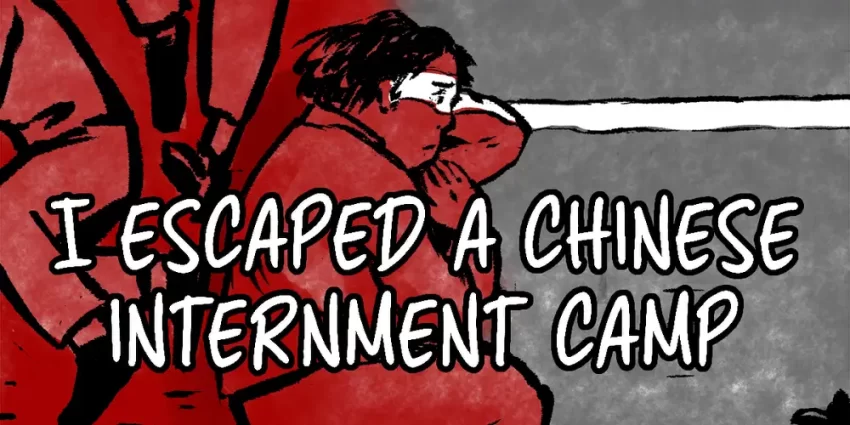
Among the awards for international issues, Fahmida Azim, Anthony Del Col, Josh Adams and Walt Hickey of Insider were honored in the “Illustrated Reporting and Commentary” category for “using graphic reportage and the comics medium to tell a powerful yet intimate story of the Chinese oppression of the Uyghurs, making the issue accessible to a wider public.“
Marjorie Miller, the Pulitzer administrator who announced the awards, did not address the open letter signed two weeks ago by dozens of professional journalism organizations, nonprofits and labor unions asking the Pulitzers to add language requiring newsrooms to participate in the News Leaders Association’s annual diversity survey (or one similar) by 2024 in order to be considered for their journalism awards.
Winning stories also focused on threats to democracy, such as the Jan.6 riot at the U.S. Capitol, for which The Washington Post won the public service award, and wars abroad. Fearless Ukrainian journalists received a special citation.
“These stories sometimes right injustice, sometimes they illuminate a deeper context of the local communities in which we live. Sometimes they surprise and entertain,” John Daniszewski, the Associated Press vice president and editor at large for standards and co-chair of the Pulitzer Prize Board, said in his introduction to the event.
But what the journalism has in common “is that it was done ethically and seriously, and in its enterprise has [played] a part in keeping our democracies vibrant.”
- List of winners, including non-journalism awardees
- David Folkenflik, NPR: ‘The New York Times’ can‘t shake the cloud over a 90-year-old Pulitzer Prize
- Amy Goodman and Juan Gonzalez with Maria Hinojosa and David Luis “Suave” Gonzalez, “Democracy Now!”: Maria Hinojosa, Futuro Media & PRX Win Pulitzer for “Suave” Podcast on Prisoner’s Journey to Freedom (May 10)
- Vanessa Romo, NPR: Winner praises the Pulitzer board’s commitment to the ‘heart’ in journalism (May 10)
Nominate a J-Educator Who Promotes Diversity
Beginning in 1990, the Association of Opinion Journalists, now part of the News Leaders Association, annually granted a Barry Bingham Sr. Fellowship — actually an award — “in recognition of an educator’s outstanding efforts to encourage minority students in the field of journalism.”
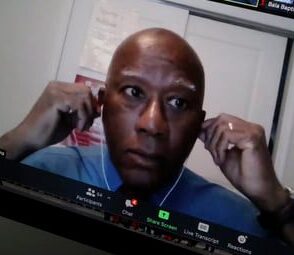 Since 2000, the recipient has been awarded an honorarium of $1,000 to be used to “further work in progress or begin a new project.”
Since 2000, the recipient has been awarded an honorarium of $1,000 to be used to “further work in progress or begin a new project.”
Past winners include James Hawkins, Florida A&M University (1990); Larry Kaggwa, Howard University (1992); Ben Holman, University of Maryland (1996); Linda Jones, Roosevelt University, Chicago (1998); Ramon Chavez, University of Colorado, Boulder (1999); Erna Smith, San Francisco State (2000); Joseph Selden, Penn State University (2001); Cheryl Smith, Paul Quinn College (2002); Rose Richard, Marquette University (2003).
Also, Leara D. Rhodes, University of Georgia (2004); Denny McAuliffe, University of Montana (2005); Pearl Stewart, Black College Wire (2006); Valerie White, Florida A&M University (2007); Phillip Dixon, Howard University (2008); Bruce DePyssler, North Carolina Central University (2009); Sree Sreenivasan, Columbia University (2010); Yvonne Latty, New York University (2011); Michelle Johnson, Boston University (2012); Vanessa Shelton, University of Iowa (2013); William Drummond, University of California at Berkeley (2014); Julian Rodriguez of the University of Texas at Arlington (2015); David G. Armstrong, Georgia State University (2016); Gerald Jordan, University of Arkansas (2017), Bill Celis, University of Southern California (2018); Laura Castañeda, University of Southern California (2019); Mei-Ling Hopgood, Northwestern University (2020); and Wayne Dawkins, Morgan State University (2021) (pictured).
Nominations may be emailed to Richard Prince, Opinion Journalism Committee, richardprince (at) hotmail.com. The deadline is May 27. Please use that address only for NLA matters.
Facebook to Let J-Scholarship Program End
May 8, 2022
Some NAHJ Leaders Uneasy About the Connection
No Asian Americans On-Air in 25% of Top Markets
Multiple Reasons for Failure of Black News Channel
Layoffs at Short-Lived Netflix Unit
Kudos for Detailing Tucker Carlson’s Racism
Not What’s in the Bridal Magazines
Increase in Blaming Asian Americans for COVID
Black Churches Plan to Mobilize Over ‘Roe’
L.A. Uprising: ‘Race Made My Editors Nervous’
An Idea: Build Community Into Crime Coverage
‘Everything’s Racist’
In 2020, a coalition including Color of Change launched a “Stop Hate for Profit” campaign that took aim at Facebook’s barrage of advertising. Rashad Robinson, president of Color of Change, spoke here with Roland Martin. (Credit: YouTube).
Some NAHJ Leaders Uneasy About the Connection
Facebook’s journalism scholarship program, which gave students more than $1 million over the last five years through the journalists-of-color organizations and NLGJA: The Association of LGBTQ Journalists, is quietly expiring and is not being renewed, the board of the National Association of Hispanic Journalists learned Saturday.
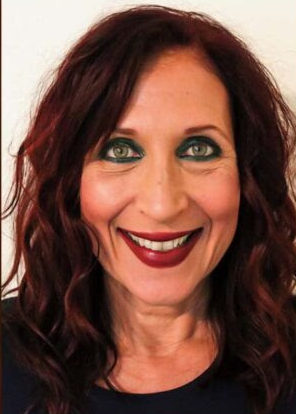 Some NAHJ board members had been uncomfortable with taking Facebook money, with investigative reporter McNelly Torres (pictured), a national at-large officer, saying that “Facebook has driven white supremacy.”
Some NAHJ board members had been uncomfortable with taking Facebook money, with investigative reporter McNelly Torres (pictured), a national at-large officer, saying that “Facebook has driven white supremacy.”
Torres had said at the board’s January meeting, “They have decided that the money is more important than anything else,” calling the social media giant “a threat to democracy.”
Yvette Cabrera, national vice president for online, agreed then, saying, “It’s really against our interests as journalists to continue.” Board president Nora Lopez replied, “I do find our relationship with them somewhat problematic going forward.”
The references were to concerns that Facebook has blood on its hands because of the disinformation spread on its platform, particularly in the conflict areas of Myanmar and Ethiopia, where thousands have died.
Critics say that Facebook and other platforms such as Twitter, TikTok, Instagram and YouTube have not been effective enough in curbing hate speech. As recently as April 28, a group called the Center for Countering Digital Hate said those companies “failed to act on 89% of posts containing anti-Muslim hatred and Islamophobic content reported to them.”
Facebook has made no announcement that the project is expiring, and David Grant, the program manager, could not be reached over the weekend. However, Facebook’s parent company, Meta, “said Thursday it is cutting back on hiring. The move is one of several shifts the Facebook parent company is making following a period of slower-than-usual growth,” Clare Duffy reported for CNN Business.
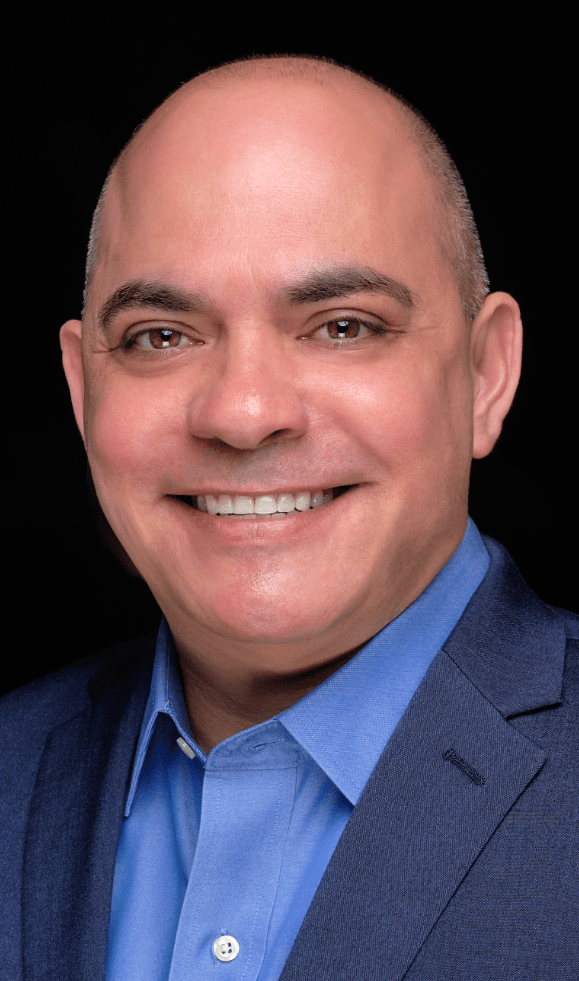 NAHJ’s new executive director, David Peña Jr. (pictured), made the disclosure in reporting on the organization’s finances. NAHJ received $250,000 over five years. “They will not be renewing. We’ll be exploring other opportunities,” he said.
NAHJ’s new executive director, David Peña Jr. (pictured), made the disclosure in reporting on the organization’s finances. NAHJ received $250,000 over five years. “They will not be renewing. We’ll be exploring other opportunities,” he said.
The associations awarded students $10,000 each to use toward their college tuition. When the program was announced, the groups were happy to get the money, although NABJ more recently met with Facebook top managers and expressed displeasure with the company’s handling of disinformation and hate speech.
“NABJ joins our fellow journalism organizations, the National Association of Hispanic Journalists, Native American Journalists Association, Asian American Journalists Association, and the National Lesbian and Gay Journalists Association, as participants in Facebook’s forward-thinking initiative to collectively distribute more than one million dollars of vital scholarship resources to our respective [constituencies],” NABJ said in its 2018 announcement.
“NLGJA: The Association of LGBTQ Journalists is proud to continue a partnership with the Facebook Journalism Project,” that group says on its website. “The Facebook Journalism Project is committed to supporting quality journalism that strengthens and connects communities.”
NABJ’s then-executive director, Sharon Toomer, initially turned down the money in 2018 on the grounds that it did not come with funds to administer the grant. However, the board reversed that decision. Toomer resigned four months later.
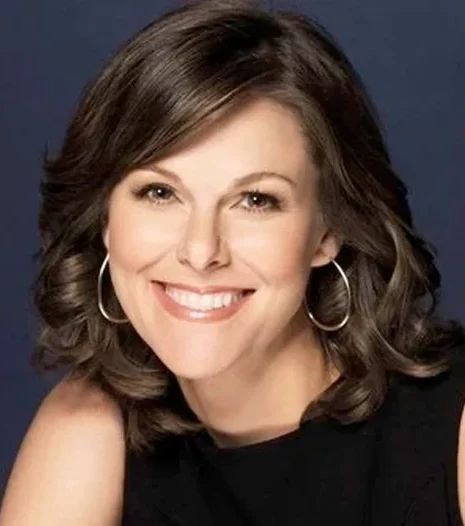 The scholarship program is part of a larger journalism initiative by Meta, the parent company “I am proud to say that over the last four years, we have become one of the largest funders of journalism in the world, and I think we take that responsibility really seriously,” Campbell Brown (pictured), the former television journalist who became the company’s vice president of global news partnerships, told TheWrap last year.
The scholarship program is part of a larger journalism initiative by Meta, the parent company “I am proud to say that over the last four years, we have become one of the largest funders of journalism in the world, and I think we take that responsibility really seriously,” Campbell Brown (pictured), the former television journalist who became the company’s vice president of global news partnerships, told TheWrap last year.
Brown noted that the Facebook Journalism Project had committed $600 million to news content since 2018 and planned to nearly double that amount in the coming years, to $1 billion, Antoinette Siu reported.
Facebook announced in 2020 that more than 200 news organizations would receive nearly $16 million in grants through the Facebook Journalism Project’s relief fund for local news. “Half are published by or for communities of color,” the organization said.
“These grants stem from $25 million in local news relief funding announced in March as part of Facebook’s $100 million global investment in news.”
- Ezra Klein, New York Times: TikTok May Be More Dangerous Than It Looks
- Lucas Manfredi, Fox News: Facebook parent Meta to freeze hiring amid revenue growth slowdown
- Sylvia Varnham O’Regan and Jessica Toonkel, The Information: Meta Rethinks News Partnerships as Priorities Shift (May 9) (paywall)
- Antoinette Siu, The Wrap: Facebook Projected to Lose 700,000 Teen Users by 2025 as Next Generation Migrates to Other Platforms
No Asian Americans On-Air in 25% of Top Markets
Nearly half (48.3%) of Asian American Pacific Islanders live in the top 20 media markets, yet a quarter of the stations had no AAPIs on air, the Asian American Journalists Association said Thursday.
The association’s “broadcast snapshot analyzing the number of Asian American Pacific Islander (AAPI) reporters, anchors, meteorologists and hosts working in local television newsrooms” found that:
- “A quarter of the stations (22 out of 94) had no AAPIs on-air.
- “More than 70 percent (70) of the stations did not have a proportion of on-air staff comparable with the AAPI population in their DMA,” or media market.
- “Only 4 out of 20 of the DMAs had on-air staff comparable with their local AAPI population: Phoenix, Denver, Miami and Cleveland.
- “Philadelphia, Detroit and Orlando were the markets with the least proportionate AAPI representation on air. . . .”
Multiple Reasons for Failure of Black News Channel
Despite its “wide availability, bountiful funding, and impressive roster of talent on both sides of the camera,” Black News Channel “never took off,” Juwan Holmes wrote Friday for Mediaite, analyzing why the network failed. Holmes wrote that he talked with “several BNC insiders who worked on and off the air.”
“The network averaged just 4,000 viewers in 2021, according to Nielsen, ranking behind Newsy, Accuweather, and Fuse,” Holmes continued.
BNC, the first 24-hour news network for Black audiences, launched in 2019, filed for bankruptcy protection on April 19.
Holmes cited “astronomical ambitions”; anchor salaries that in two cases were “north of $300,000”; its launch of a streaming service, BNC Go, that competed with the main channel; allegations of a hostile work environment; and a “controversial choice of guests and debates” on Marc Lamont Hill’s primetime “Black News Tonight,” which “raised eyebrows among BNC staff.”
Moreover, the handling of the shutdown left many staffers angry and owed money.
CEO Princell Hair messaged Journal-isms Sunday, “I will not be commenting on BNC at this time.”
Layoffs at Short-Lived Netflix Unit
“When asked what the work environment was like at Tudum, the editorial operation Netflix gutted with layoffs just months after its creation, a former employee compared it to . . . a chilling series from another streaming service,” Laura Bradley wrote April 29, updated May 1, for the Daily Beast.
“ ‘It’s a super weird, positive environment, the freshly laid-off staffer told The Daily Beast. ‘I felt like Adam Scott in Severance.’
“On Thursday, Netflix cut at least 10 workers just months after aggressively courting them to create Tudum. A source told The Daily Beast that 25 people, staff and contractors, lost their jobs in total across the company’s marketing division. In addition to getting unceremoniously laid off, the workers are set to receive only a pitiful two weeks’ severance.”
 Bradley also wrote, “Multiple sources praised Evette Dionne (pictured), the editorial and publishing manager recruited seven months ago to spearhead Tudum’s culture and trends team, for her skilled and supportive management. Dionne — the only full-time staffer on the team of full-time contractors — was among those laid off Thursday.
Bradley also wrote, “Multiple sources praised Evette Dionne (pictured), the editorial and publishing manager recruited seven months ago to spearhead Tudum’s culture and trends team, for her skilled and supportive management. Dionne — the only full-time staffer on the team of full-time contractors — was among those laid off Thursday.
“Her former employees laid the blame not with her, but with the company that hired and then allegedly undermined her. Executives were said to have stymied her efforts to establish the brand in a manner that felt, at least to one of the former staff, ‘passive-aggressive.’ (Dionne did not respond to The Daily Beast’s request for an interview.)
“ ‘This was one of the most diverse teams that I have worked on in media,’ one source said, ‘and I feel like this is honestly kind of a textbook thing where they put a Black woman in charge of something that they know they’re not going to support — that they know they’re going to sabotage — and then just let it fail. . . . ”
- Sara Fischer and Kerry Flynn, Axios: Scoop: Huge layoffs expected at Lee Enterprises
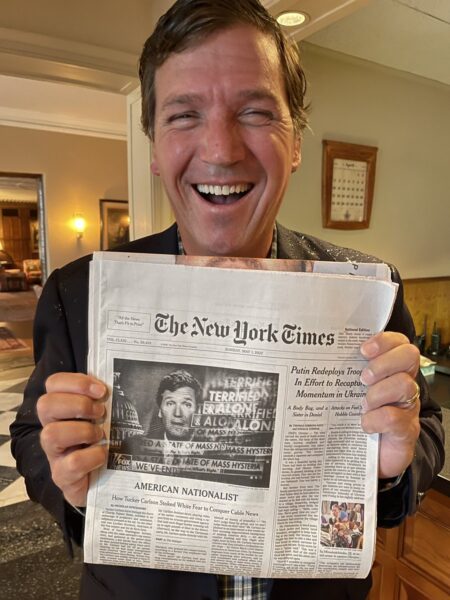
Kudos for Detailing Tucker Carlson’s Racism
A three-part series about the racism of Fox News’ Tucker Carlson in The New York Times ended last week with kudos from many, and grumbles from some who asked why Carlson was allotted so much “free publicity.” Carlson said he didn’t intend to read the series.
“Every night, more than three million people tune in to Tucker Carlson show on the FOX News Channel,” Judy Woodruff explained on the “PBS NewsHour.” “It is the most watched cable news show last year.”
The Times said it analyzed 1,150 episodes of “Tucker Carlson Tonight” and reporter Nicholas Confessore tweeted that the story was “based on interviews with dozens of current and former Fox employees, Carlson’s friends and former colleagues, and an array of public records,” as Tom Jones reported for the Poynter Institute.
The series began April 30, reporting that “Mr. Carlson has constructed what may be the most racist show in the history of cable news — and also, by some measures, the most successful.
“Though he frequently declares himself an enemy of prejudice — ‘We don’t judge them by group, and we don’t judge them on their race,’ Mr. Carlson explained to an interviewer a few weeks before accusing impoverished immigrants of making America dirty — his show teaches loathing and fear.
“Night after night, hour by hour, Mr. Carlson warns his viewers that they inhabit a civilization under siege — by violent Black Lives Matter protesters in American cities, by diseased migrants from south of the border, by refugees importing alien cultures, and by tech companies and cultural elites who will silence them, or label them racist, if they complain. . . .”
Jones, the daily media writer at Poynter, called the series “stunningly detailed” and deeply reported.
“Carlson, who declined to be interviewed for the Times series, told Axios’ Mike Allen that he ‘of course won’t’ read the Times series. On Sunday, Carlson tweeted a photo of himself smiling widely (laughing?) while holding up a front of the Times, where the story about him was prominently displayed. There were no words in Carlson’s tweet.
“Speaking of no words, NPR TV critic Eric Deggans tweeted, ‘Laughing at a story that says he hosts the most racist show in (mainstream) cable news history. I have no words‘ .”
In the American Prospect, Eric Alterman wrote that he feared that the clarity achieved by the Times’ unambiguous baring of Carlson’s appeal would be lost when future pieces about Carlson fall victim to “bothsidesism.”
Washington Post media blogger Erik Wemple homed in Thursday on the Times’ reports of Carlson’s efforts to intimidate co-workers who objected to his comments about Muslims and his dog-whistle white supremacy. “Carlson wants to send a signal that you don’t mess with him,” Wemple wrote. “He wants people, including his colleagues, to keep quiet.’ However, Wemple said, “Whatever his reason for fearing dissent, the path forward is clear: They should continue to speak.”
Ruben Navarrette Jr., who writes a syndicated column for the Washington Post Writers Group, had a take that some might call a different kind of “bothsidesism.”
“The problem with hatchet jobs like the one the Times did on Carlson is that they wind up letting left-wing racists off the hook, Navarrette wrote.
“News flash: Cable TV news is a sandbox run by white folks that is plagued by systemic racism from both liberals and conservatives.”
As evidence, Navarrette cited his own experiences at CNN: “A white CNN editor told me to stop writing about the soaring number of deportations by former president Barack Obama because ‘people are tired of hearing it.’ A white anchor — shocked by my suggestion that some Latinos might, in the 2012 presidential election, support Republican Mitt Romney — blurted out: ‘Latinos aren’t stupid, are they?’ ”
- Nicholas Confessore, New York Times: How Tucker Carlson Stoked White Fear to Conquer Cable (Part 1 of series) (April 30, updated May 4)
- Nicholas Confessore, New York Times: What to Know About Tucker Carlson’s Rise (April 30)
- Nicholas Confessore, New York Times: How Tucker Carlson Reshaped Fox News — and Became Trump’s Heir (Part 2 of series) (April 30, updated May 4)
- Peter Coy, New York Times: Tucker Carlson Is Proof That the Customer Isn’t Always Right
- Letters, New York Times: Tucker Carlson’s Influence on America and Its Media
- Matt Gertz, Media Matters for America: If you are in business with Fox News, you are on the hook for its white nationalism
Not What’s in the Bridal Magazines
“The wedding industry is up and running again as more people are vaccinated and couples have rescheduled their canceled plans due to COVID,” “PBS News Weekend,” hosted by Geoff Bennett, reported Saturday. “But the return of weddings is also highlighting the lack of services catered to people of color and nontraditional couples.” That includes bridal magazines and other media. “Special correspondent Fred de Sam Lazaro looks at how some in the industry are hoping to change that.”
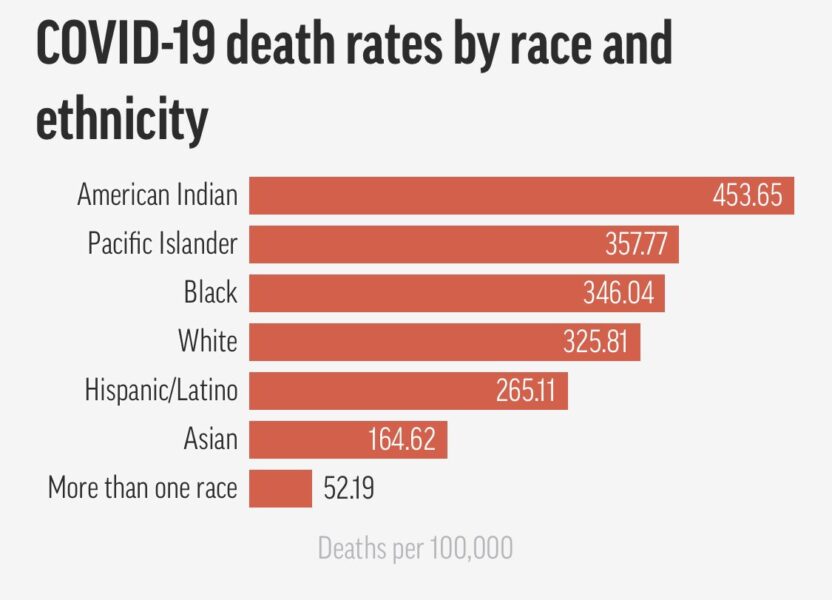
Increase in Blaming Asian Americans for COVID
“More Americans are now blaming Asian Americans for Covid-19 than at the height of the pandemic in 2021, according to a report released Wednesday by Asian American advocacy groups,” Tat Bellamy-Walker reported Thursday for NBC News.
“More than 20 percent of respondents said this year that people of Asian descent are at least partly responsible for Covid-19, compared to 11 percent who said last year that the community was to blame. The study, released by Leading Asian Americans United for Change (LAAUNCH.org) and The Asian American Foundation (TAAF), also showed higher levels of distrust of Asian Americans.”
Asked “Are Asian Americans at least partly responsible for COVID-19,” 57 percent disagreed, 21 percent were neutral and 23 percent agreed.
“Thirty-three percent of respondents said that people of Asian descent are more loyal to their perceived country of origin than to the U.S., compared to 20 percent who said the same in 2021.”
The report comes as the United States this week reached 1 million deaths from the virus.
As Carla K. Johnson and Nicky Forster reported Friday for the Associated Press, “Native Americans experienced higher death rates than all other groups during two waves of the pandemic,” and when “considering age, it’s apparent that Black, Hispanic, Pacific Islander and Native American people suffered disproportionately more from COVID-19 deaths than other groups in the U.S.”
In other questions from the Asian American survey, when asked “where do you get most of your information about Asian Americans?” 54 percent of Americans polled said “news.”
To another question, “How much influence do you feel that Asian Americans have on U.S. society in media and news?” 10 percent said “extremely influential,” 18 percent said “very influential,” 38 percent said “somewhat influential,” 22 percent said “slightly influential,” and 11 percent, “not at all influential.”
Asked “how are the following racial groups being treated in the U.S. today?” 21 percent said white Americans were discriminated against; 62 percent said Black Americans were; 53 percent said the same about Latino Americans and 56 percent said that about Asian Americans.
- Centers for Disease Control and Prevention: COVID-19 Was Third Leading Cause of Death in U.S. (April 22)
- Oliver Darcy, CNN: Journalists from multiple news outlets test positive after White House Correspondents Dinner weekend
- Editorial, Buffalo News: Covid is still here. Patience and vigilance remain essential
- Paul Farhi, Washington Post: Yes, a lot of White House correspondents’ guests are testing positive
- Annie Ma and Hannah Fingerhut, Associated Press: Racial Split On COVID-19 Endures As Restrictions Ease In U.S. (April 29)
- Justin Rohrlich, Daily Beast: CBS Exec Who Sat Next to Biden at Correspondents’ Dinner Tests Positive for COVID
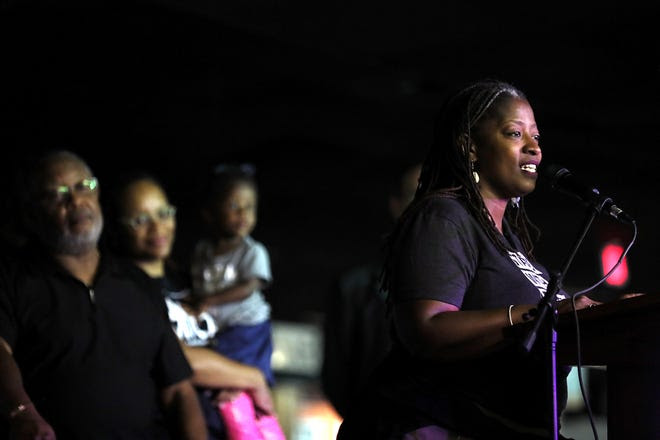
Black Churches Plan to Mobilize Over ‘Roe’
“In Black churches, the reaction to the leaked Supreme Court draft opinion on abortion boils down to education and mobilization,” Adelle M. Banks wrote Tuesday for Religion News Service, providing a perspective not seen in much of mainstream news reporting.
“Jacquelyn Dupont-Walker, social action commission director of the African Methodist Episcopal Church, said her historically Black denomination will continue its long involvement in getting voters to the polls. But now, if Roe v. Wade is likely to be overturned, she said there is also an urgency around personal messaging, to help people understand what it means for them and for where they live. . . .
“Black churchgoers — and African Americans more widely — are not monolithic in their perspectives on abortion. The Pew Research Center noted in a 2021 report that 8 in 10 religiously unaffiliated Black Americans say abortion should be legal in most or all cases, in contrast with 7 in 10 Black Catholic church attenders, about two-thirds of Black Protestants who worship in Black churches and about half of Black Protestants who attend white churches or congregations predominated by another race.
“But a reversal of the nation’s highest court on abortion is not likely to sway Black church members to lean more Republican or Democratic as midterm elections draw near, predicts Justin Giboney, president of the AND Campaign, which educates and organizes Christians for civic and cultural engagement.
“For many Blacks, he said, abortion is not a primary issue, but he suggested that an emphasis on Judge Ketanji Brown Jackson being named to the court could be ‘more of a motivator than Roe.’ . . .”
- Nicole Acevedo and Carmen Sesin, NBC News: Anti-abortion Latinos look forward to future without Roe v. Wade
- Acee Agoyo, indianz.com: Supreme Court confirms leak as ‘authentic’ amid uncertainty for Indian Country
- Nathalie Baptiste, HuffPost: Don’t Let Samuel Alito Fool You: Ending Abortion Isn’t About Protecting Black Life
- Wayne Bennett, Field Negro: Samuel Alito’s tale.
- Michael Brown, Christian Post: When it comes to abortion, don’t let race baiters influence you
- Jonathan Capehart, Washington Post: Alito’s draft ruling on abortion is a warning to LGBTQ Americans
- Carliss Chatman, The Grio: Could Dobbs signal the end of Brown v. Board of Education?
- Tanya Christian, Ebony: Burden of Black and Brown Women Amplified After Leaked Roe Decision
- Suzanne Gamboa and Nicole Acevedo, NBC News: Latino abortion rights advocates warn of ‘dark times’ if Roe v. Wade is reversed
- Suzanne Gamboa, Nicole Acevedo and Carmen Sesin, NBC News: Can abortion galvanize Latino Democratic and Republican voters?
- Marcela García, Boston Globe: Abortion, Democrats, and the Hispanic electorate: A complicated dynamic
- Renee Graham, Boston Globe: This could be the unsettling end of Roe v. Wade as ‘settled law’
- Leonard Greene, Daily News, New York: Trump supporters, including women, bear the blame for threat to abortion rights
- Suzette Hackney, USA Today: If you truly value life, you’ll ensure a healthy future for all ‘saved’ babies, right?
- Melissa Hellmann and April Simpson, Center for Public Integrity: To imagine a world without Roe, look to Kentucky
- Colbert I. King, Washington Post: Send a message on Roe v. Wade with your ballot
- National Hispanic Media Coalition: The Supreme Court Has Engaged in a Partisan Assault on Women’s Rights: NHMC Urges Congress to Codify Roe v Wade Immediately
- Clarence Page, Chicago Tribune: Dems, if you don’t care about the Supreme Court, you may not deserve to win
- Eugene Robinson, Washington Post: Ketanji Brown Jackson must wonder what she has gotten herself into
- Fabiola Santiago, Miami Herald: U.S. military women aren’t dying in combat to surrender equal rights to you, Republicans
- Reni Soon, Honolulu Civil Beat: Hawaii Could Still See Impact If SCOTUS Upends Roe V. Wade
- Will Sutton, NOLA.com: Guys, when it comes to abortion, shut up and listen
- Helen Ubiñas, Philadelphia Inquirer: As antiabortion activists claim ‘the sanctity of life’ justifies the reversal of Roe v. Wade, American children keep dying
- Adrian Walker, Boston Globe: The Supreme Court is coming after democracy itself
- Kyra Watts, Tennessean, Nashville: Roe v. Wade decision might go, but Cherisse Scott’s story shows why women deserve a choice
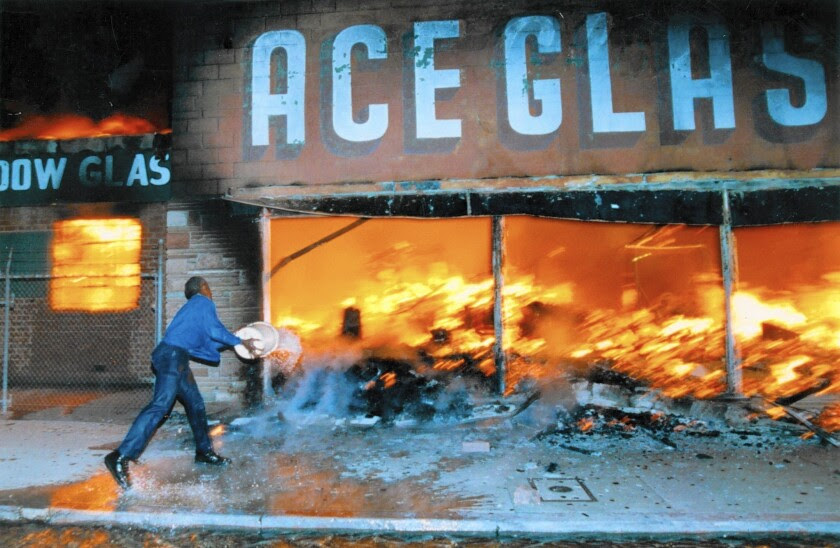
L.A. Uprising: ‘Race Made My Editors Nervous’
Héctor Tobar, who grew up in Los Angeles, “was a cub reporter at the LA Times, the paper his father, a Guatemalan immigrant, had delivered when Tobar was a kid,” Jon Allsop wrote Friday for Columbia Journalism Review, revisiting the conflagration that 30 years ago followed the beating by four police officers of Rodney King, a Black motorist in Los Angeles.
“After the video of the King beating became public, editors assigned Tobar to help write the paper’s lead story on the incident.
“‘The most important thing when you write that story is the lede,’ Tobar told [the Slate podcast] Slow Burn’s Joel Anderson, ‘so I started with something like, ‘The brutal beating of a Black man by a group of mostly white police officers set off a national furor.’ Tobar’s editor, who was white, had other ideas, stripping any mention of race from the top of the story; the fact that King was Black was first mentioned in the twelfth paragraph. ‘When I look at that story as the first draft of history,” Tobar said, “I think, Oh my God, we got it so wrong. We missed the essence of the story.’
Tobar wrote April 28 for the New York Times Magazine, “Race made my editors nervous. It stirred up the passions of our readers, and in a city with a history of cyclical race-related violence, racial passion was no small matter. I found my editors’ timidity both amusing and offensive, but being both obedient and ambitious, I never spoke out. It felt to me as if the media couldn’t consider race as anything other than the looming potential for disorder and violence, a source of division. . . .
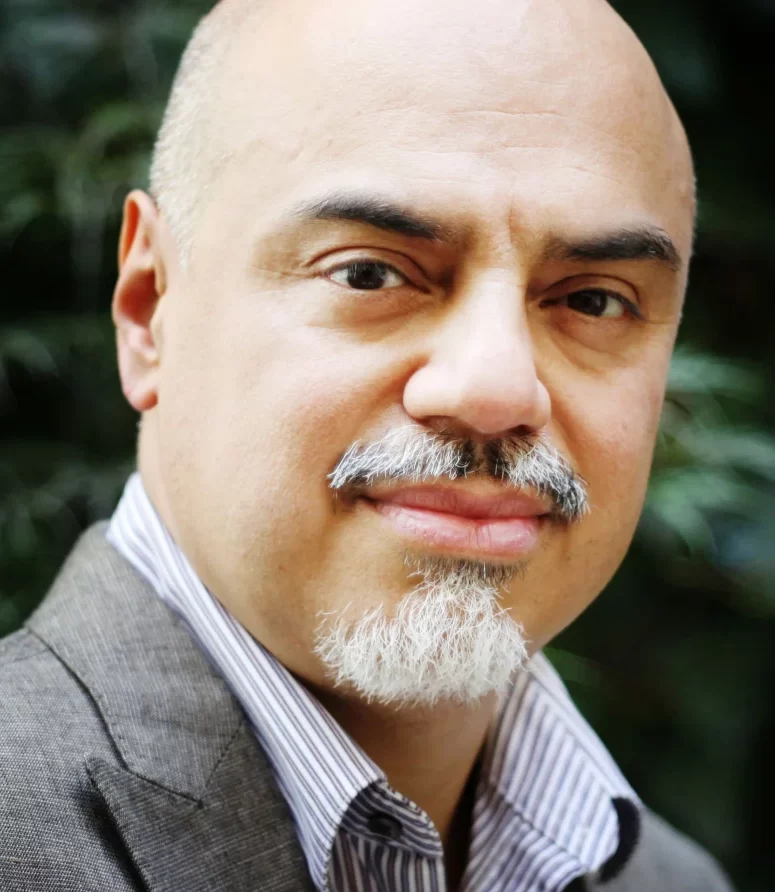 Now the author of five books, Tobar (pictured) said of the editors, “I also wanted them to see the Los Angeles that I knew and lived in, a city where people lived in tense coexistence, but coexistence nonetheless. Instead, in the days after the riots, my editors assigned me a humbler task: Go find some Latino looters to interview and hand over my notes to a more seasoned writer.
Now the author of five books, Tobar (pictured) said of the editors, “I also wanted them to see the Los Angeles that I knew and lived in, a city where people lived in tense coexistence, but coexistence nonetheless. Instead, in the days after the riots, my editors assigned me a humbler task: Go find some Latino looters to interview and hand over my notes to a more seasoned writer.
“It felt to many reporters of color at the time that we had been sent out to report in an urban war zone, while a mostly white staff of editors shaped what actually appeared in the newspaper. These complaints had a bitter historical context: When the 1965 Watts riots struck, The Times had no Black reporters at all and relied on the dispatches sent by a Black member of the advertising staff. . . .”
Referring to suburban Long Beach, Tobar continued, “On Wilson High’s campus, I found a glimmer of the Los Angeles that I remember from my childhood in East Hollywood. This is the version of race relations in Los Angeles County that The Times’s coverage of the riots — Wilson High in particular — obscured. I always felt, as a reader and as a reporter, an underlying insistence that conversations about race were about conflict rather than the peculiar ways in which Angelenos construct multiethnic lives together. In those lives there is a complexity and richness that journalistic narratives of race sometimes find hard to embrace. . . .”
Tobar tweeted on May 1, “It was worth the 30-year wait to be able to say this in a United States newspaper. And me being able to say this in The New York Times is, of course, due to 30 years of struggles waged across this country. “
- Karen Grigsby Bates, Code Switch,” NPR: The LA Uprising, a generation later (April 27)
- Conor Friedersdorf, the Atlantic: Rodney King’s Finest Hour
- Earl Ofari Hutchinson, Hutchinson Report: Thirty Years After the Flames — The LA Riots (April 25)
- Monique Judge, Andscape: 30 years after the 1992 Los Angeles uprising, not enough has changed
- Hanna Kang, NBC News: Korean American-Black conflict during L.A. riots was overemphasized by media, experts say (April 29)
- Roland Martin, #RolandMartinUnfiltered and #BlackStarNetwork: 30th Anniv. Of The Rodney King Verdict Riots in LA (YouTube video)
- Helena Ku Rhee, Los Angeles Times: For my Korean-Black family, the aftermath of the L.A. riots cut deep
- Frank Shyong, Los Angeles Times: What we got wrong about Black and Korean communities after the L.A. riots
An Idea: Build Community Into Crime Coverage
“Here’s an idea to steal and adapt: Local news sites nationwide rely too heavily on law enforcement sources, and crime stories dominate their news coverage. Gannett newsrooms [have] committed to repairing relationships and building trust with members of marginalized communities by rethinking community justice and public safety coverage,” Michael Feeley, Brittany Horn, Audrey Harvin and Michael Kilian wrote in the News Journal of Wilmington, Del., and picked up by Better News.
“In Rochester, one of America’s most segregated cities, Democrat and Chronicle journalists set up an internal working group in August 2019 to make public safety coverage less off-putting to members of marginalized communities.
“The Democrat and Chronicle took steps beginning in 2019 to stop writing up nearly every police press release and to make a concerted effort to include community voices in public safety stories. And it joined other Gannett newsrooms in ending the routine publication of police-supplied mug shots.
“The (Delaware) News Journal, for instance, was finding that deeper, more three-dimensional dives into crime and policing stories generated more readership and new subscriptions. . . .”
- Stan Choe, Associated Press: As diversity rises, US boards still disproportionately white
- Larry Graham, Editor & Publisher: Focus less on salary, more on inclusivity to recruit journalists of color
- Andrew Kersley, Press Gazette, Britain: Working class representation in UK journalism hits record low, report says
- Sylvia Stead, Globe and Mail, Toronto: Some progress on diversity coverage, but more to be done
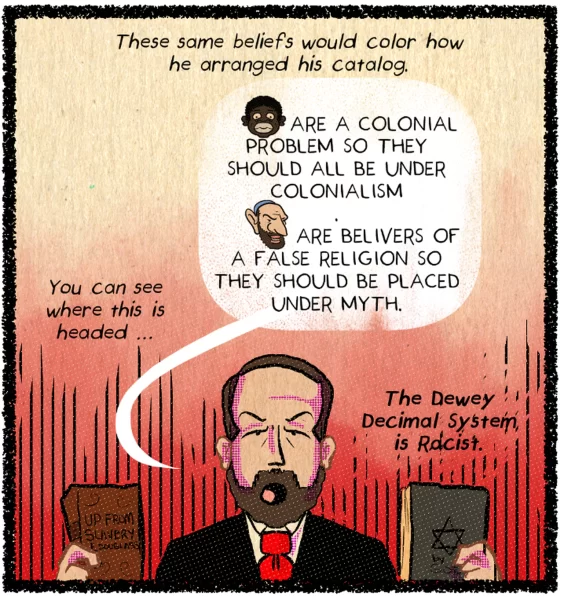
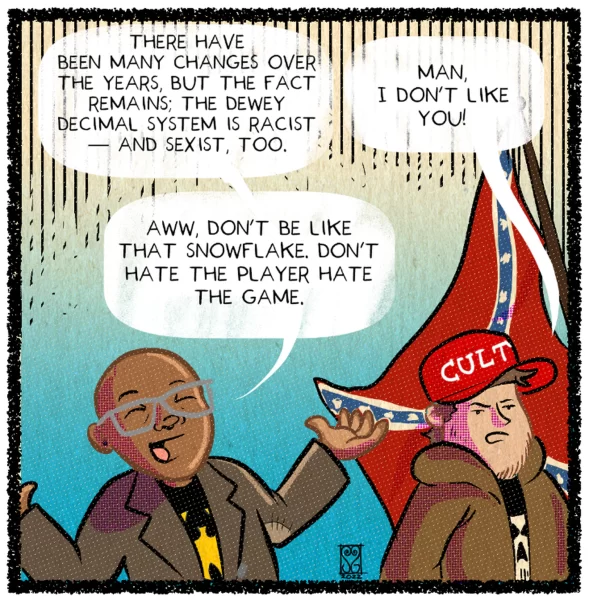
‘Everything’s Racist’
A reimagined The Emancipator, the first abolitionist newspaper in the United States, has debuted as a collaboration between Boston University’s Center for Antiracist Research and The Boston Globe’s Opinion team. The Emancipator is provided without a paywall.
The current issue features a comic by Joel Christian Gill that reveals for readers the racism and sexism of Melvil Dewey, who created the Dewey Decimal System. The comic is titled “Everything’s Racist.”
To subscribe at no cost, please send an email to journal-isms+subscribe@groups.io and say who you are.
Facebook users: “Like” “Richard Prince’s Journal-isms” on Facebook.
Follow Richard Prince on Twitter @princeeditor
Richard Prince’s Journal-isms originates from Washington. It began in print before most of us knew what the internet was, and it would like to be referred to as a “column.” Any views expressed in the column are those of the person or organization quoted and not those of any other entity. Send tips, comments and concerns to Richard Prince at journal-isms+owner@
View previous columns (after Feb. 13, 2016).
View previous columns (before Feb. 13, 2016)
- Diversity’s Greatest Hits, 2018 (Jan. 4, 2019)
- Book Notes: Is Taking a Knee Really All That? (Dec. 20, 2018)
- Book Notes: Challenging ’45’ and Proudly Telling the Story (Dec. 18, 2018)
- Book Notes: Get Down With the Legends! (Dec. 11, 2018)
- Journalist Richard Prince w/Joe Madison (Sirius XM, April 18, 2018) (podcast)
- Richard Prince (journalist) (Wikipedia entry)
- February 2018 Podcast: Richard “Dick” Prince on the need for newsroom diversity (Gabriel Greschler, Student Press Law Center, Feb. 26, 2018)
- Diversity’s Greatest Hits, 2017 — Where Will They Take Us in the Year Ahead?
- Book Notes: Best Sellers, Uncovered Treasures, Overlooked History (Dec. 19, 2017)
- An advocate for diversity in the media is still pressing for representation, (Courtland Milloy, Washington Post, Nov. 28, 2017)
- Morgan Global Journalism Review: Journal-isms Journeys On (Aug. 31, 2017)
- Diversity’s Greatest Hits, 2016
- Book Notes: 16 Writers Dish About ‘Chelle,’ the First Lady
- Book Notes: From Coretta to Barack, and in Search of the Godfather
- Journal-isms’ Richard Prince Wants Your Ideas (FishbowlDC, Feb. 26, 2016)
- “JOURNAL-ISMS” IS LATEST TO BEAR BRUNT OF INDUSTRY’S ECONOMIC WOES (Feb. 19, 2016)
- Richard Prince with Charlayne Hunter-Gault, “PBS NewsHour,” “What stagnant diversity means for America’s newsrooms” (Dec. 15, 2015)
- Book Notes: Journalists Follow Their Passions
- Book Notes: Journalists Who Rocked Their World
- Book Notes: Hands Up! Read This!
- Book Notes: New Cosby Bio Looks Like a Best-Seller
- Journo-diversity advocate turns attention to Ezra Klein project (Erik Wemple, Washington Post, March 5, 2014)
When you shop @AmazonSmile, Amazon will make a donation to Journal-Isms Inc. https://t.co/OFkE3Gu0eK
— Richard Prince (@princeeditor) March 16, 2018

